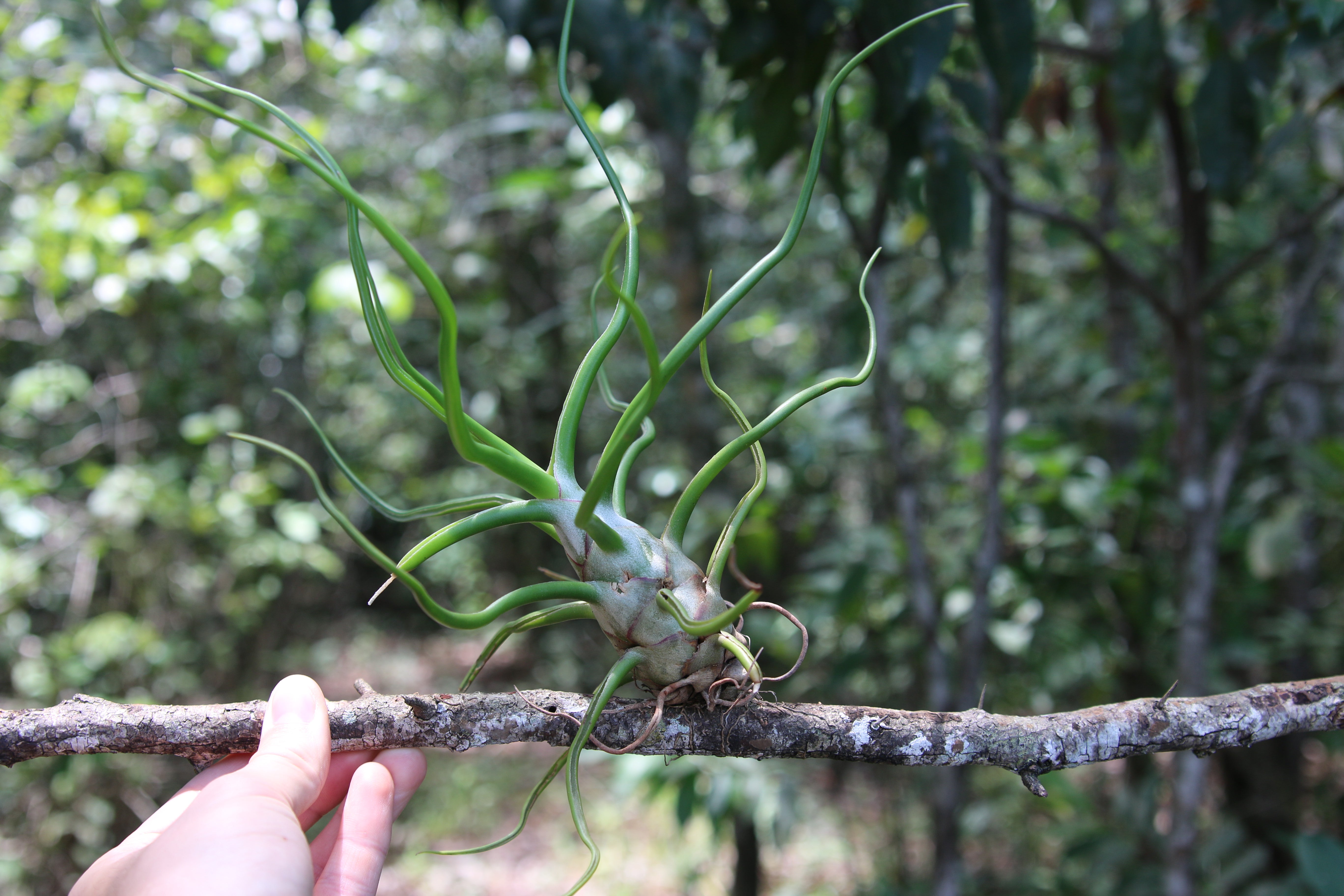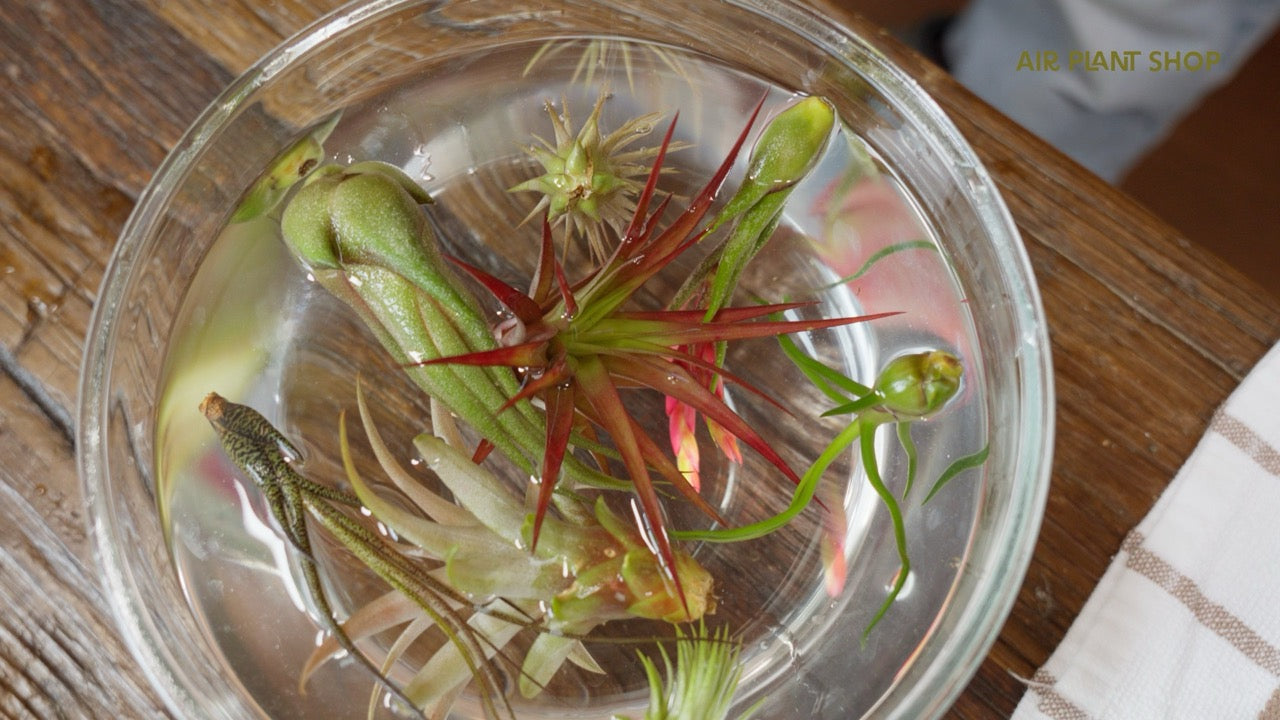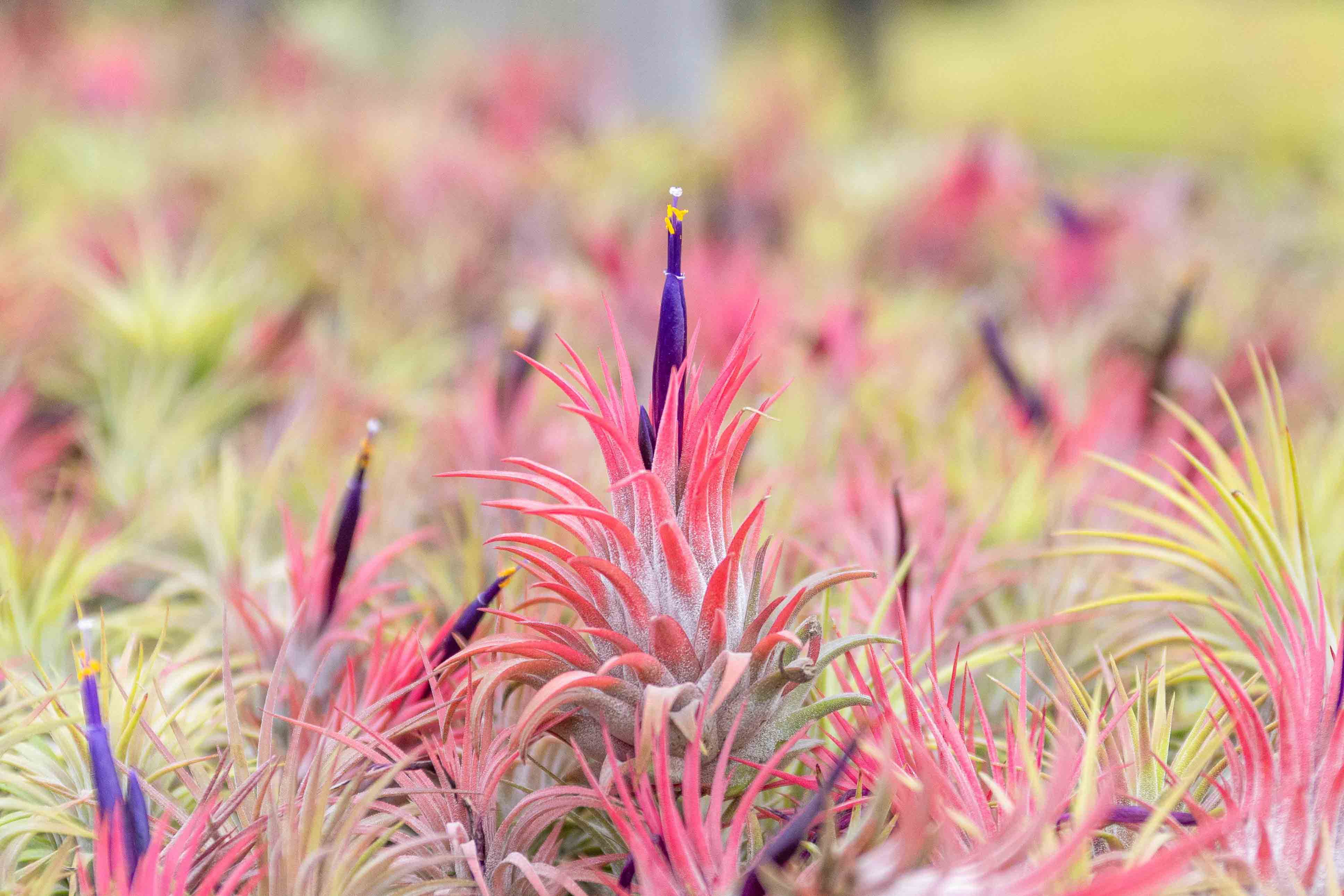Plants come in all shapes and sized and live in diverse climates and ecosystem. From the hardy arctic plants of the north to underwater phytoplanktons that live near deep sea hydrothermal vents, all of these plants have adapted to their environments and carved out niches that have allowed them to thrive on this planet. Epiphytes called Tillandsia or Air Plants are one of these plant families that have found a unique niche that allows them to thrive in harsh environments.
What are Epiphytes?

Epiphytes are plants that grow or attach themselves on other plants for support. Their root systems are only used to attach and hold themselves in place and not usually for acquiring water and nutrients. That is where they get their name, from the Greek epi- (meaning 'upon') and phyton (meaning 'plant'). Why is this important? Getting up off the ground away from grazing animals, wild fires or flooding and running waters is a very advantageous adaptation that has allowed these unique species survive. It is a survival method that seems to have allowed for a very unique survival.
Where do they get their nutrients if they don’t use soil?

When epiphytes left the soil behind they had to get nutrients another way. One simple way would become parasites and steal nutrients from their plant hosts but epiphytes took another route. Being a parasite is dangerous when you accidently kill the host. Air Plants found a good compromise. Their leaves adapted to take in both moisture and nutrients while their roots primarily took care of attaching themselves to other plants. Air plants can still use photosynthesis to produce foods but some have to rely on it less due to their shady environments under tree canopies. To make up the difference some Air Plants have developed trichomes on their leaves to catch and absorb nutrients from both air and water. Trichomes are the white fuzzy hairs that are visible on many Air Plant Species. These little hairs catch moisture and dust particles in the air and allow the plant to feed and hydrate itself. Minerals in fog, rain water and leached from the tree or plant host itself are enough to keep Air Plants healthy, fed and happy.
Because this method of gathering nutrients can cause longer waits between meals Air Plants have adapted to do their breathing at night. In order to keep valuable moistures inside the plant they only open the stomata on their leaves to ‘breath in’ carbon dioxide. During the day they use photosynthesis to turn that Co2 into energy and food! This amazing adaptation means that you should avoid watering your Air Plants at night or in the evening so you don’t interrupt this important process.
Knowing more about your Air Plants and understanding how and why they do what they do will help you better care for and enjoy the entire process of raising these amazing plants. They truly are unique and fascinating plants that have adapted and become incredible survivors on this wildly diverse planet.










You can also spray plants with a fish emulsion once per month during the summer to increase blooms and growth. Don’t overdo it with watering or fish emulsion, because air plants are adapted to getting what they need from the air alone. Consider water and fertilizer as supplemental ways to increase the vitality of your air plants. Some of the colorful bromeliads, like the ones pictured here, will develop a richer color with the spraying of some nutrients.
Thanks for all the time you guys spend on my orders!! Thanks again Christian & your employees you guys are great!!???
Thank you very much for all your help and my plants made it to Hawaii in great condition…I am very happy!
i think these plants they are ecological important since they do not harm their host instead they provide a mutulistic relationship with their host. All plant benefits from one another.
Leave a comment